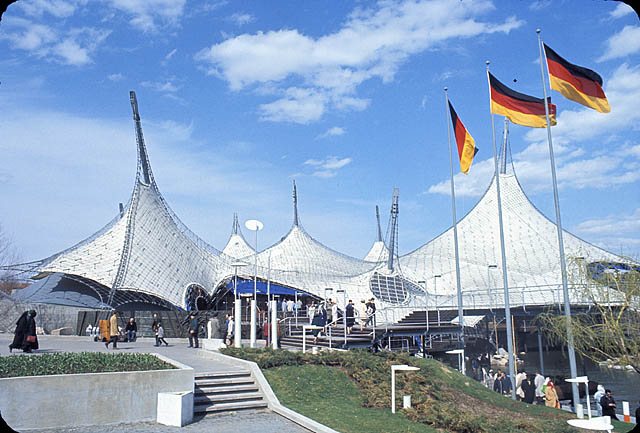

Photo credit: © National Archives of Canada
Federal Republic of Germany Pavilion
A stone's throw from the Ile Notre-Dame Expo-Express Station, the terraces of the German Pavilion offer a magnificent view of the bustling St. Lawrence Seaway. The visitor can select, on entering, between several routes to the various exhibits. Those interested in physics will appreciate Professor Otto Hahn's work table, where in 1938 he discovered that the uranium atom is fissionable. Optical and precision instruments, a German specialty, will be represented as will one of the cameras used by American astronauts. The famous bathyscape, built by a German firm for the underwater explorations of Professor Piccard, is there. The world's first printing press, the Gutenberg press dating back some 500 years, will be in operation. In the field of arts, the visitor can view an unusual display of the history of music from Bach to Stockhausen. The Berlin style restaurants will be an enjoyable place to meet friends, and the auditorium will offer movies, music and performances by German artists. Click here to see a model to scale of the German Pavilion. Click here to see a map of the German floor plan. |
1/26